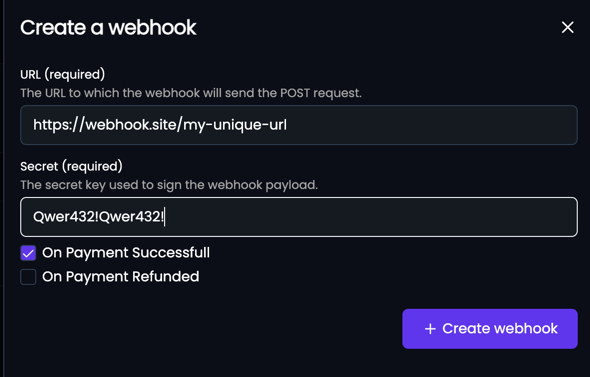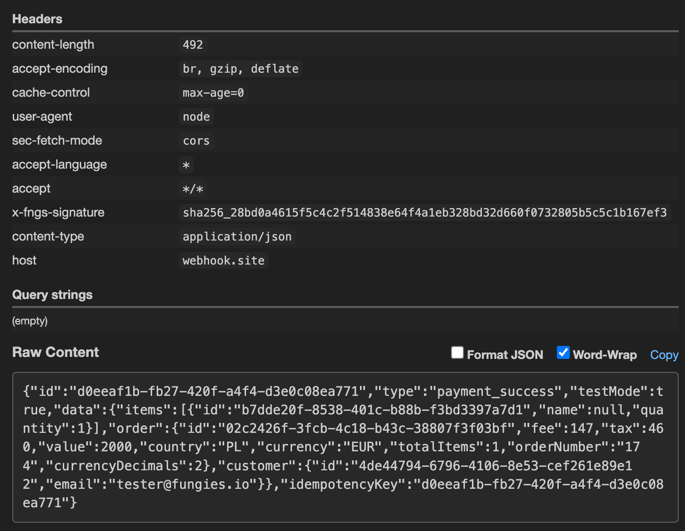1. Test the events using webhook.site
Before you start setting up your webhook endpoint, you can test the events using webhook.site. Webhook.site is a tool that allows you to test your webhook endpoints without setting up a server. It provides you with a unique URL that you can use to receive webhook events. Once you obtain the URL, go to the Fungies Dashboard and create a webhook. Navigate to the newly created webhook and click the
Navigate to the newly created webhook and click the Test button in the top right corner.
You will see a modal where you can choose the event type and data to send.
 Now you can click
Now you can click Send button and see the event data in the webhook.site dashboard.
 Sending test event does not affect any production data. Test data will include
Sending test event does not affect any production data. Test data will include testMode key set to true.
2. Test the webhook endpoint handler using the ngrok
In order to test your webhook endpoint handler locally, you can use ngrok to create a secure tunnel to your localhost server. Ngrok is a tool that creates a secure tunnel to your localhost server. It allows you to expose your local server to the internet. You can find more information at https://ngrok.com. To use ngrok, you need to download it, install and run the following command in your terminal:https://... url and use it to register your webhook endpoint in the next step.
